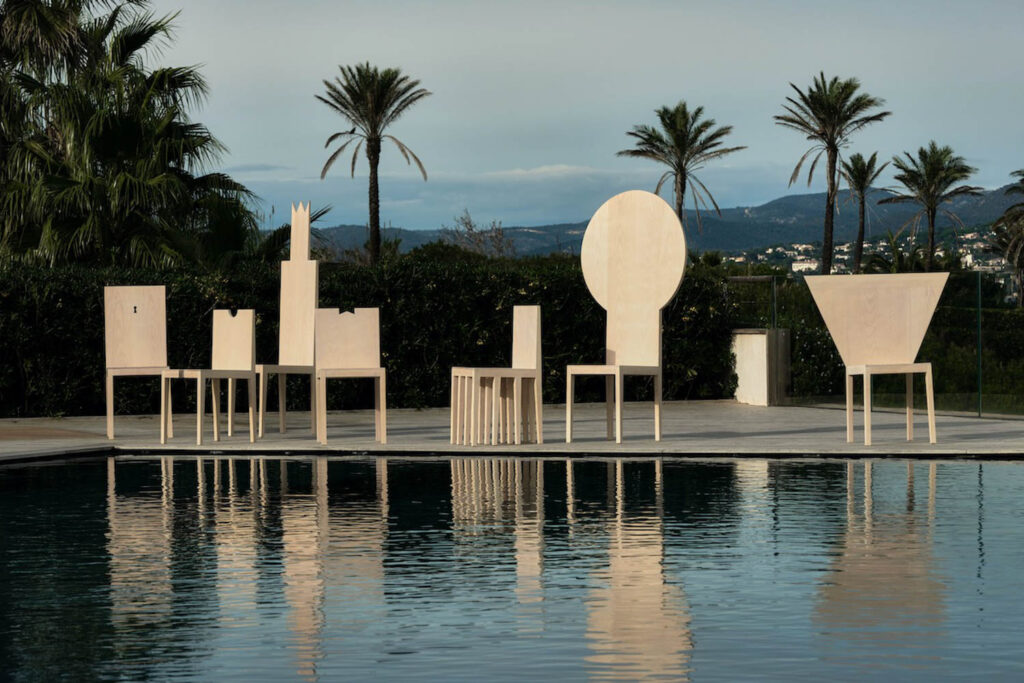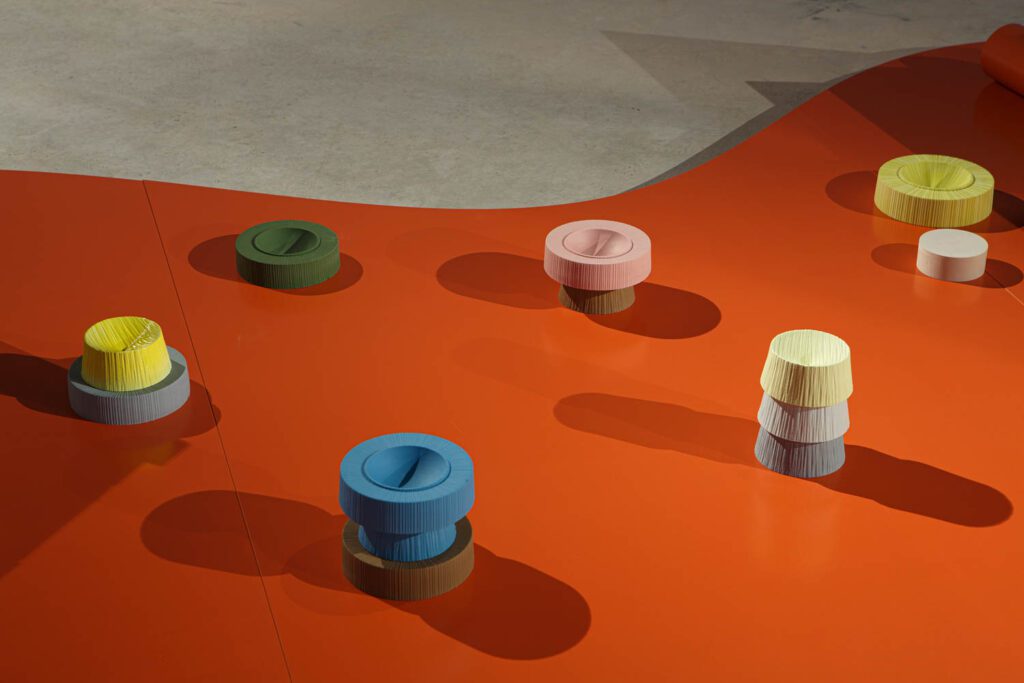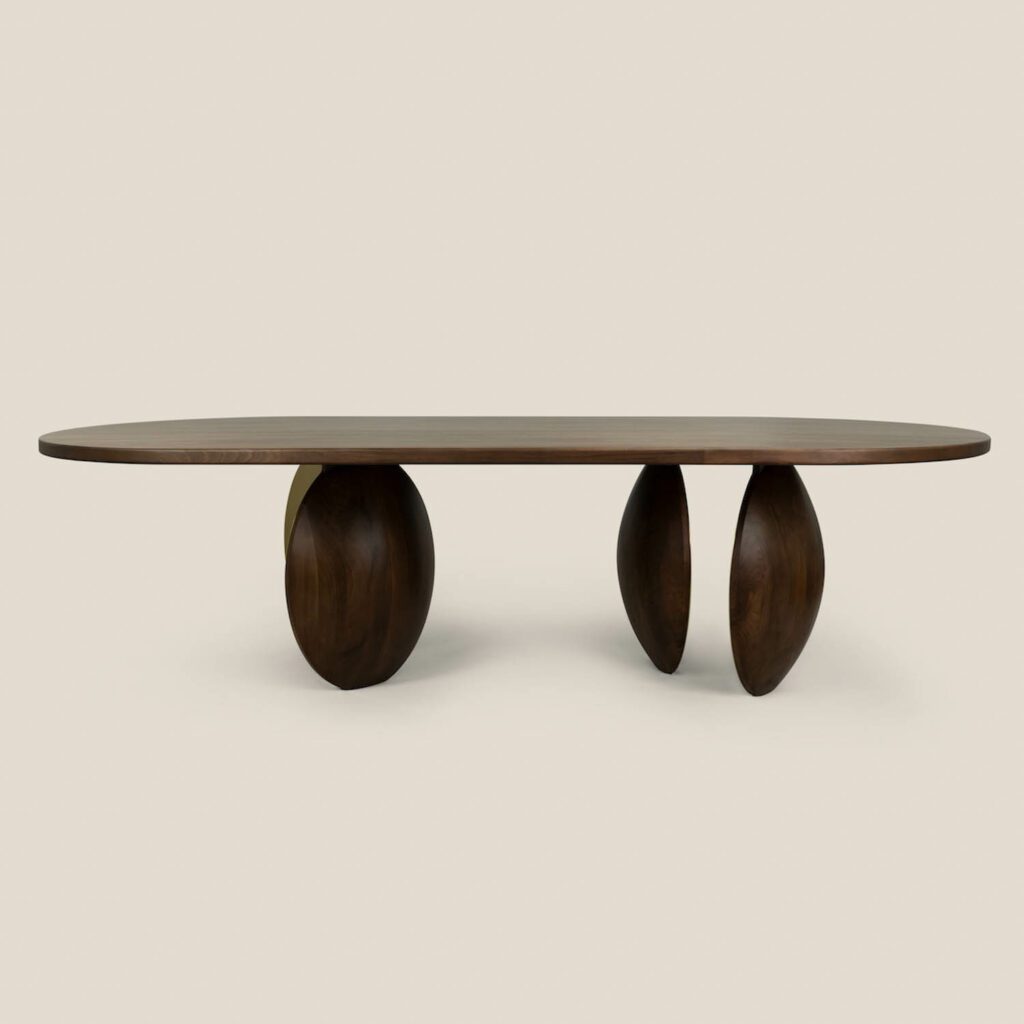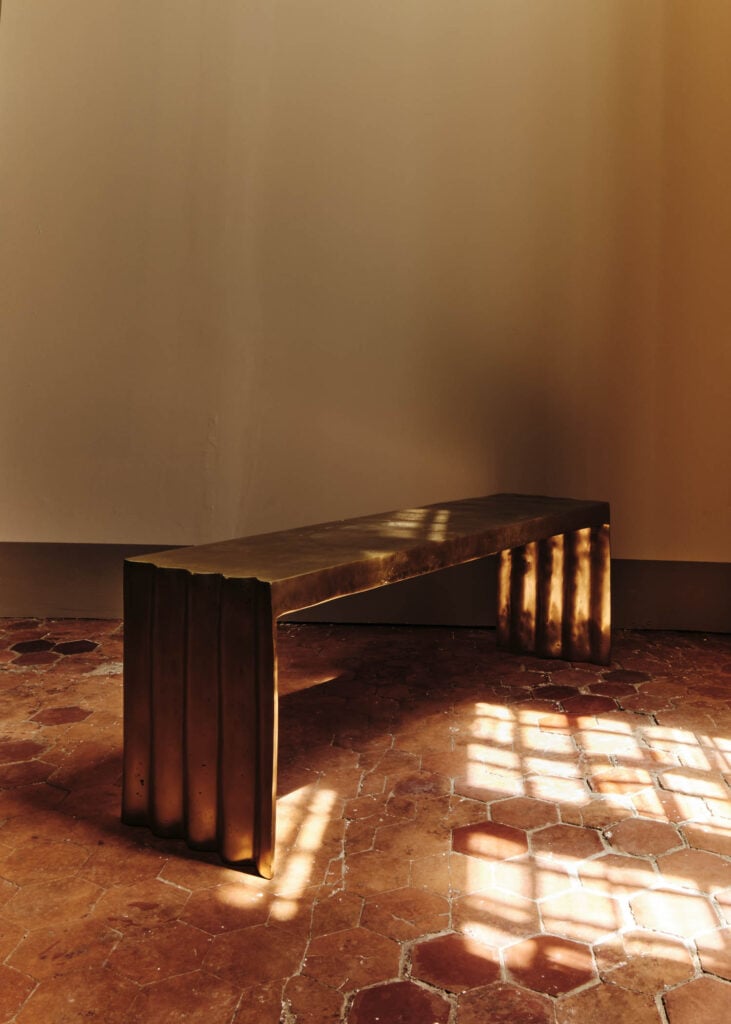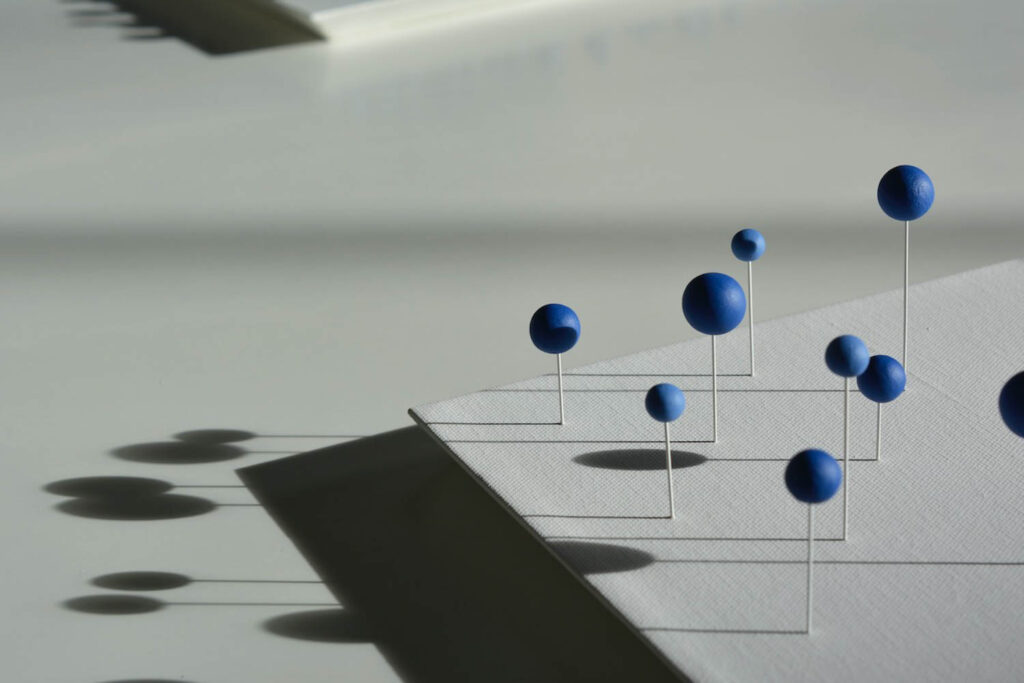
10 Questions With… Mia Karlova
“It seems like I’ve always been involved in building art collections,” admits Mia Karlova, who credits an early exposure to her mother, a gallerist and art historian. After moving from Moscow, where she helmed an interior design studio for 10 years, Karlova founded collectible design destination Mia Karlova Galerie in Amsterdam in 2020. In addition to functional design, the gallery specializes in mixed-media, sculpture, ceramics, and three-dimensional art, from an international roster of creatives.
The career transition was one that made sense. “Art and design is what elevates any interior to a completely different level,” Karlova explains. Despite an opening timed with the global pandemic, a keen eye for eclectic show-stoppers quickly earned the gallery international recognition.
Interior Design sat down with Karlova to learn more about the book that she calls her curating mantra, her view on function in design objects, and a decade she is particularly passionate about, which is reflected in the interior of her home.
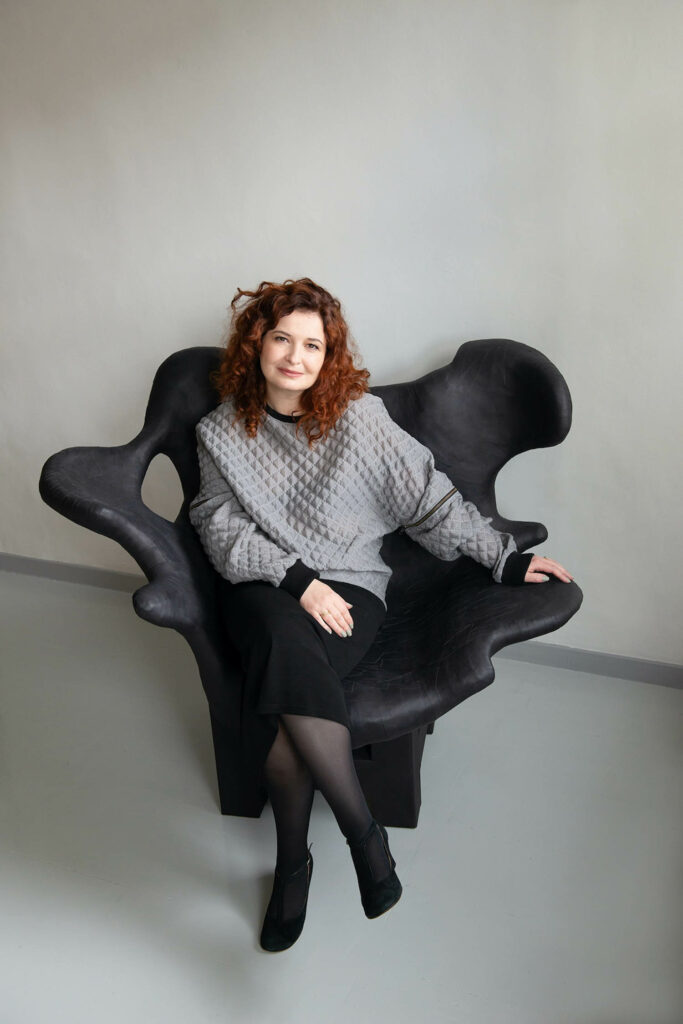
Mia Karlova Talks Collectible Design
Interior Design: What is your mission with Mia Karlova Galerie?
Mia Karlova: We live in a moment of great attention to design. I try to use this attention to say something meaningful, to present designers who have an important story to tell rather than just a mere formal and aesthetic concept. It is always important to me that there’s a big story. This is probably what the gallery is known for.
Design is capable of creating a strong emotional connection, and this emotional aspect is essential. At the end of the day, you are spending quality time with yourself in your life, enjoying pieces that surround you not just because they’re comfortable and aesthetic, but also because they’re meaningful. We build our own story every day.
I also give stage to artists whose work articulates a certain ecological consciousness. It is a joint task for both galleries and interior designers to shape taste towards a more sustainable direction and communicate this urgent idea to collectors and clients.
ID: Where does your talent come from?
MK: I am based in Amsterdam and am proudly representing Dutch artists. I enjoy the proximity to Dutch Design Week, where galleries and curators from all over the world scout for design. However, I have a very international roster, with artists and designers from France, the Czech Republic, Japan, Latvia, Russia, South Africa, and Ukraine. I’m visiting not only design fairs, but also art fairs, studios, and graduation shows. There are a lot of them, say 300 events a year. You basically could just travel and do nothing else.
The most important for me in Europe are PAD Paris and Collectible in Brussels. Collectible, which we just finished our third year participating in, is very specific and dedicated to purely collectible design for the 21st century.
ID: Could you tell us about a few stand-out creatives you represent?
MK: Prague-based Vadim Kibardin works with discarded cardboard as a main media. He creates incredible functional sculptures—furniture pieces with unarguable artistic and sculptural properties. He doesn’t use structure inside his works—only multiple layers of cardboard, finished with a special paper suitable for seating. After several years of gallery representation, we now receive commissions for his work from all over the world, from clients who prefer to use black cardboard furniture instead of leather for example, or simply desire to own a stunning embodiment of artistic tour de force.
Two recent additions to the gallery are female ceramicists, Kartimi Thomas and Jonne Stout. Both have very specific ways of approaching this media. Kartini creates playful monsters—emotionally-driven ceramic sculptures featuring porcelain elements combined with impressive, experimental glazing. Jonne creates three-dimensional wall pieces, where ceramics serve as a means to express her research on the notion of movement. The play of light and shadow on her work almost transforms them into optical illusions.

ID: Do you believe collectible design is experiencing a resurgence?
MK: Collectible design is definitely at a high point, and increasingly attracting attention from art collectors. You can see how this influences the fair market. For example, Collectible in Brussels is still young, but has already gained important momentum among collectors from all over the world. I’m also a big fan of the design showcase Alcova, held during Milan Design Week. They are doing great representation there.
In May, the gallery will take part in BAD+ Art Fair in Bordeaux, France. This new event, with strong links both to the art world and one of France’s most renowned wine regions, was from the start designed as an art de vivre fair embracing both modern and contemporary art and design.
ID: With collectible design, function sometimes seems less important. Where do you draw the line?
MK: It is true that in the world of collectible design some works are more functional, while others are more sculptural. I leave it to designers to decide what side they want to lean towards. I have pieces which are quite limited in functionality. For example, we have a wooden coat rack made from rose-tinted beechwood by Japanese designer Sho Ota. This object is functional in theory, but it is so sculptural that it disrupts the hierarchy of home objects, elevating a pure technical function to a true minimalist sculpture.
If I see the line developed by the designer, I don’t say no. Sometimes the same designer makes a capsule collection where some pieces are very visually functional, and others following the same idea and line tend to be barely functional, but still very beautiful.
ID: How do you think your childhood influenced your design thinking?
MK: I literally grew up visiting museums as it was a big part of my mother’s job as a gallerist and art historian. Our walls were full of art and our home was full of art conversations. As a teenager, I often worked on the gallery’s fair booths. This was incredible experience which I only became aware of when I opened my own gallery. This world was not unknown—and this is in part the reason why the gallery is positioned to include both art and design.
ID: Who in the industry that you particularly admire?
MK: South African artist William Kentridge. He’s known for using quite varied media, from prints and animated films to sculpture and tapestry.
ID: What are you reading?
MK: Ways of Curating by Hans Ulrich Obrist. I know this book so well, but I keep going back to it again and again as if to a mantra. It reshapes the role of curator, defining it as someone, who, despite having their own voice, is there to hear and let other voices be heard.
ID: In what kind of home do you live?
MK: I live in what could be called a designer’s house, meaning that designers fully express themselves when it comes to their own homes. My home is inspired by 1980s interiors, with vivid colors, large patterns, and expressive ceramics paired with great freedom of expression. This decade was a time of great freedom in life. My curtains, for example, are by Austrian designer Josef Frank. I also have a vintage faux-fur upholstered chair, produced in the 1970s in the Czech Republic.
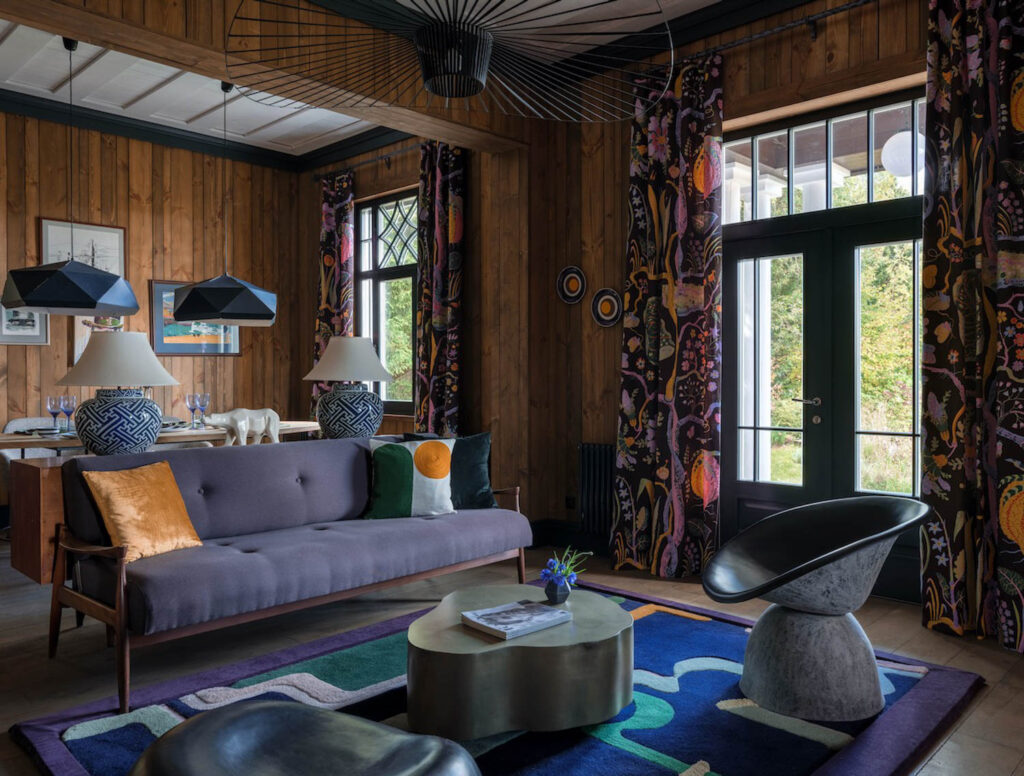
ID: Do you have a secret you can share?
MK: Svenskt Tenn is a place not to miss when in Stockholm. It’s a shop with exceptional design and living philosophy located at the same address for nearly 100 years. Josef Frank has created many of their textile patterns.
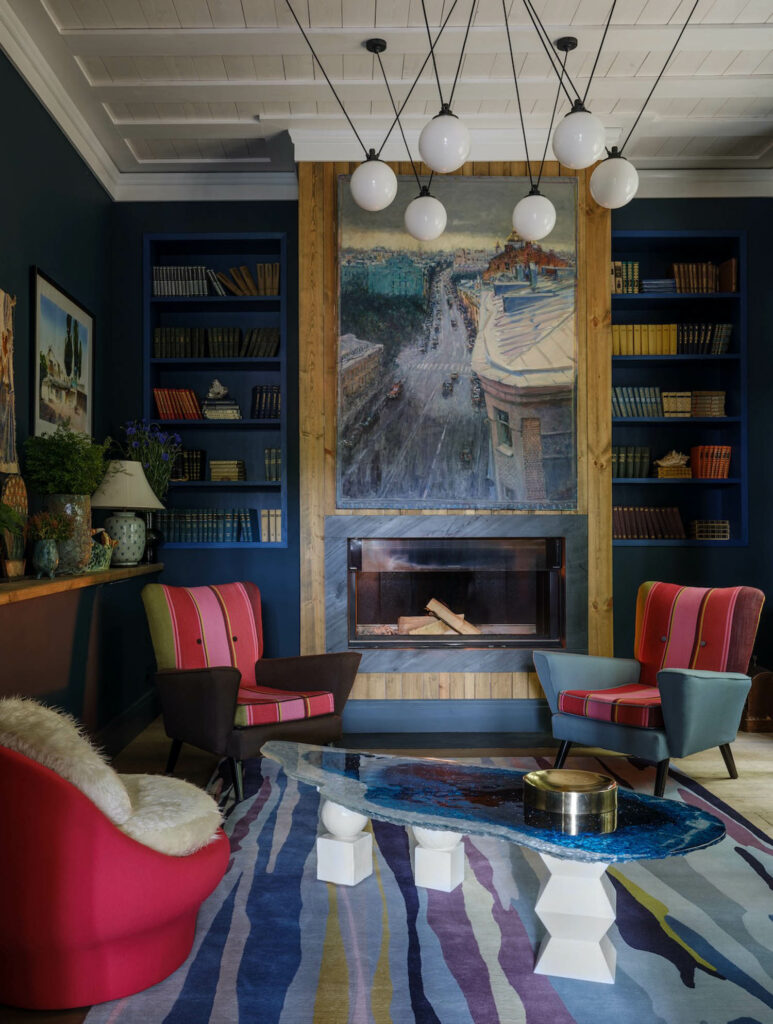

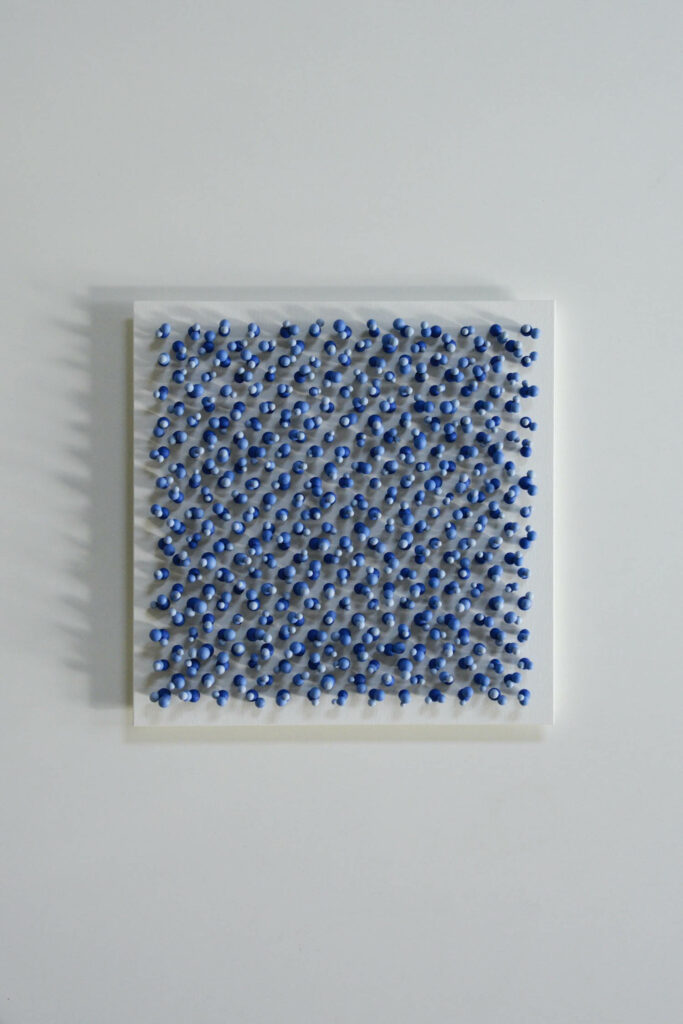




read more
DesignWire
11 Design Highlights from Collectible Brussels 2023
From a hot pink table sporting high-heel shoes to knitted coral-esque luminaires, here are 11 highlights from Collectible Brussels 2023.
DesignWire
11 Highlights from Dutch Design Week 2022
See 11 highlights from this year’s Dutch Design Week, the festival’s 20th anniversary features the work of over 2,600 designers.
DesignWire
14 Highlights from Collectible 2022
Creativity abounds at the 2022 edition of Collectible, a limited-edition design fair taking place May 20-22 in Brussels.
recent stories
DesignWire
SANDOW Companies Acquires Global Design Platform ARCHITONIC
SANDOW Companies acquires ARCHITONIC, a global platform for design professionals, expanding the brand’s reach and offerings.
DesignWire
10 Questions With… Ambre Jarno Of Maison Intègre
In founding Maison Intègre, Ambre Jarno aims to preserve traditional craftsmanship in Burkina Faso through artisan collaborations.
DesignWire
10 Questions With… Song Sung Blue Production Designer Clay Griffith
Clay Griffith delves into production design, offerings a glimpse into his own cinematic life while reflecting on the visual storytelling of Song Sung Blue.
